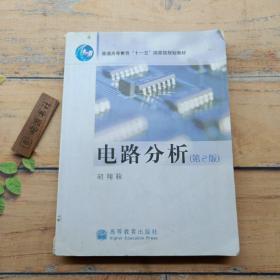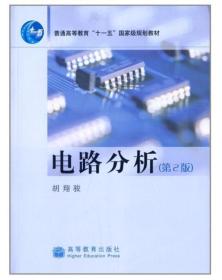
电路分析
全新正版 极速发货
¥ 20.38 6.2折 ¥ 33 全新
仅1件
广东广州
认证卖家担保交易快速发货售后保障
作者马文忠
出版社中国石油大学出版社
ISBN9787563654239
出版时间2017-03
装帧平装
开本16开
定价33元
货号1201763033
上书时间2024-09-03
- 最新上架
商品详情
- 品相描述:全新
- 商品描述
-
目录
Chapter 1 Circuit Models and Circuit Law
1.1 Systems of Units
1.2 Charge and Current
1.3 Voltage
1.4 Current and Voltage Reference Directions
1.5 Power and Energy
1.6 Circuit Elements
Problems
Chapter 2 Basic Laws
2.1 Ohms Law
2.2 Kirchhoffs Law
2.3 Series Resistors and Voltage Division,Parallel Resistors and Current Division
2.4 Wye-delta Transformation
2.5 Source Transformation
Problems
Chapter 3 Methods of Analysis
3.1 Nodal Analysis
3.2 Nodal Analysis with Voltage Sources
3.3 Mesh Analysis
3.4 Mesh Analysis with Current Sources
3.5 Nodal Versus Mesh Analysis
Problems
Chapter 4 Circuit Theorems
4.1 Linearity Property
4.2 Superposition
4.3 Thevenins Theorem
4.4 Nortons Theorem
4.5 Maximum Power Transfer
Problems
Chapter 5 Capacitors and Inductors
5.1 Capacitors
5.2 Series and Parallel Capacitors
5.3 Inductors
5.4 Series and Parallel Inductors
Problems
Chapter 6 First-order Circuits
6.1 Dynamic Circuit and Initial, Final Values
6.2 The Source-free RC Circuit
6.3 The Source-free RL Circuit
6.4 Singularity Functions
6.5 Step Response of an RC Circuit
6.6 Step Response of an RL Circuit
Problems
Chapter 7 Sinusoids and Phasors
7.1 Sinusoids
7.2 Phasors
7.3 Phasor Relationships for Circuit Elements
7.4 Kirchhoffs Laws in the Frequency Domain
Problems
Chapter 8 Sinusoidal Steady-state Analysis
8.1 Impedance and Admittance
8.2 Impedance(Admittance) Combinations
8.3 Sinusoidal Steady state Analysis
Problems
Chapter 9 Sinusoidal Steady-state Power Analysis
9.1 Instantaneous and Average Power
9.2 Effective or RMS Value
9.3 Complex Power
9.4 Maximum Average Power Transfer
Problems
Chapter 10 Three-phase Circuits
10.1 Three-phase Circuits
10.2 The Relation of Line Voltage(Current) and Phase Voltage(Current)
10.3 Balanced Three-phase Circuit
10.4 Unbalanced Three-phase Systems
10.5 Power in Three-phase Circuit
Problems
Chapter 11 Magnetically Coupled Circuits
11.1 Mutual Inductance
11.2 Contains Coupling Inductance Circuit Calculation
11.3 Linear Transformers
11.4 Ideal Transformers
Problems
Chaper 12 Nonsinusoidal Period Current Circuit
12.1 Trigonometric Fourier Series
12.2 Symmetry Considerations
12.3 Circuit Applications
12.4 Average Power and RMS Values
Problems
Chapter 13 The Complex Frequency Domain Analysis of Linear Dynamic Circuit
13.1 Definition of the Laplace Transform
13.2 Properties of the Laplace Transform
13.3 The Inverse Laplace Transform
13.4 Operation Circuit
13.5 Application of Laplace Transform Method of Linear Circuit Analysis
13.6 Transfer Functions
Problems
References
内容摘要
本书为中国石油大学(华东)留学生特色教材,全书以英文写成,共分14章,主要介绍电路分析相关的一些基本概念、基本模型、基本定律、基本方法等,以及一些具体典型电路(如一阶电路、耦合电路、三相电路、非正弦周期电流电路、线性动态电路、非线性电路等)的分析过程,每节后面配有习题。本书可供留学生学习电路分析课程使用,也可供相关院校师生参考。
相关推荐
— 没有更多了 —



















以下为对购买帮助不大的评价